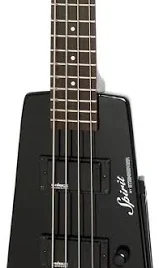Bass Guitar Sight-Reading
Bass Guitar sight-reading is an essential skill for any serious musician, especially for bass guitarists. It enables you to play music you’ve never seen before accurately and confidently. Imagine being able to join any band or group and immediately contribute because you can read and play new music on the spot. Let’s dive into why sight-reading is so crucial and how you can master it.
Basics of Sight-Reading for Bass Guitar
What is Sight-Reading
Sight-reading involves playing a piece of music from written notation without having seen it before. It’s like reading a book aloud for the first time without prior practice. This skill allows musicians to interpret and perform music accurately at first glance.
Why Sight-Reading Matters
Sight-reading helps improve your musicality, timing, and overall proficiency on the bass guitar. It allows you to play with others more effectively and adapt to new pieces quickly. Whether you’re preparing for a gig, joining a jam session, or simply practicing, sight-reading can make you a more versatile and confident player.
Tools Needed for Bass Guitar Sight-Reading
Metronome
A metronome helps you keep a consistent tempo, which is crucial for accurate sight-reading. It trains you to maintain a steady beat and improves your timing, making your playing more precise and professional.
Music Stand
A sturdy music stand keeps your sheet music at eye level, making it easier to read while you play. It prevents you from having to bend over or strain your neck, allowing for a more comfortable practice session.
Sheet Music
Having a variety of sheet music to practice with is essential for developing your sight-reading skills. Start with simpler pieces and gradually move to more complex ones to challenge yourself and track your progress.
Understanding Musical Notation
Notes and Rhythms
Learning to recognize notes and their corresponding rhythms is the foundation of sight-reading. Spend time familiarizing yourself with the different note values and rhythmic patterns. Practice reading and playing these notes to become more comfortable with them.
Key Signatures
Key signatures tell you which notes are sharp or flat throughout a piece. Knowing key signatures helps you play the correct notes instinctively. Memorize common key signatures and practice pieces in different keys to strengthen this skill.
Time Signatures
Time signatures indicate the number of beats in a measure and the note value that gets the beat. Understanding time signatures is essential for maintaining proper rhythm. Practice clapping and playing different time signatures to get a feel for their unique rhythms.
Starting with Simple Exercises
Basic Scales
Practicing scales is a great way to get comfortable with the fingerings and notes on the bass guitar. Start with major and minor scales. They help you familiarize yourself with the layout of the fretboard and build muscle memory for common note patterns.
Simple Melodies
Begin with simple melodies that use basic rhythms and notes. This helps build your confidence and accuracy. Choose pieces that you enjoy and gradually increase the difficulty as you become more comfortable.
Developing Rhythm Skills
Clapping Rhythms
Practice clapping different rhythms before playing them on your bass guitar. This helps internalize the timing. It’s a simple yet effective way to improve your rhythmic accuracy without the added complexity of playing notes.
Playing Rhythms on Open Strings
Focus on playing rhythms using open strings first. This allows you to concentrate on the timing without worrying about fingerings. Once you’re comfortable, add notes and fingerings to the mix.
Building Finger Dexterity
Finger Exercises
Daily finger exercises improve your dexterity and speed. Try chromatic exercises to get all your fingers moving independently. These exercises strengthen your fingers and improve coordination, making complex passages easier to play.
Scale Practice
Regularly practicing scales enhances your finger agility and helps you navigate the fretboard with ease. Incorporate different fingerings and positions to challenge yourself and develop a more versatile playing style.
Practicing Sight-Reading Daily
Setting Practice Goals
Set specific, achievable goals for your sight-reading practice. This keeps you motivated and focused. Whether it’s mastering a particular piece or improving your reading speed, having clear goals helps you track your progress and stay on track.
Daily Practice Routine
Dedicate a portion of your daily practice time to sight-reading. Consistency is key to improvement. Even 10-15 minutes of focused sight-reading practice each day can lead to significant progress over time.
Using Technology to Improve
Sight-Reading Apps
There are many apps designed to help you practice sight-reading. These can provide instant feedback and a wide variety of exercises. Apps like “Music Tutor” and “Sight Reading Trainer” offer customizable practice sessions and track your progress.
Online Resources
Utilize online resources like YouTube tutorials and music theory websites to supplement your practice. Websites like musictheory.net and videos from experienced musicians can provide valuable insights and additional exercises.

Joining a Music Group
Playing in a Band
Joining a band can significantly improve your sight-reading skills. You’ll need to read music on the fly and keep up with other musicians. This real-world practice forces you to apply your sight-reading skills in a practical, dynamic setting.
Participating in Jam Sessions
Jam sessions are a great way to practice sight-reading in a relaxed, fun environment. You’ll learn to adapt quickly and play with others. These informal gatherings allow you to experiment with different styles and genres, enhancing your overall musicianship.
Analyzing Different Music Genres
Classical
Classical music often features complex arrangements and requires precise sight-reading skills. Practicing classical pieces can improve your technical ability and attention to detail.
Jazz
Jazz involves a lot of improvisation, but being able to sight-read standard charts is crucial. Jazz standards often include complex chord progressions and rhythms, providing a challenging but rewarding practice experience.
Rock
Rock music might seem simpler, but accurate sight-reading can help you master the genre’s nuances. Learning rock pieces can improve your timing, dynamics, and overall groove.
Learning to Read Ahead
Strategies for Reading Ahead
Train yourself to read a few beats ahead of where you’re playing. This helps you anticipate what’s coming next. Practice this skill by playing slowly and gradually increasing the tempo as you become more comfortable.
Practicing Reading Ahead
Practice reading ahead by slowly increasing the tempo of your sight-reading exercises. This builds your ability to stay ahead of the music. Focus on maintaining accuracy and rhythm even as you speed up.
Overcoming Common Challenges
Dealing with Difficult Rhythms
Break down complex rhythms into smaller parts and practice them slowly before speeding up. Use a metronome to help keep time and gradually increase the tempo as you improve.
Handling Complex Fingerings
Analyze tricky fingerings and practice them in isolation until they become second nature. Break down difficult passages and work on them slowly, focusing on accuracy and smooth transitions.
Tracking Your Progress
Keeping a Practice Journal
Maintain a journal to track your practice sessions and progress. Note down what you’ve practiced and areas for improvement. This helps you stay organized and see how far you’ve come.
Recording Your Playing
Record yourself playing to identify mistakes and track your improvement over time. Listening to recordings can provide valuable feedback and help you make adjustments to your technique.
Conclusion
Sight-reading is a valuable skill that opens up new possibilities for any bass guitarist. With consistent practice and the right techniques, you can master sight-reading and enhance your musical abilities. Keep pushing yourself, and remember, every great musician started where you are now. Embrace the journey, and enjoy the process of becoming a more proficient and versatile player.
FAQs
1. How long does it take to learn sight-reading?
It varies, but with regular practice, you can see significant improvement within a few months. The key is consistent, focused practice.
2. Can I learn sight-reading on my own?
Yes, with dedication and the right resources, self-study is possible. Use books, online resources, and apps to guide your practice.
3. What’s the best way to practice sight-reading?
Daily practice with a variety of sheet music and consistent use of a metronome. Start with simpler pieces and gradually increase the difficulty.
4. Do I need to know music theory to sight-read?
Basic knowledge of music theory is very helpful for sight-reading. Understanding notes, rhythms, key signatures, and time signatures will make the process easier.
5. Are there any shortcuts to mastering sight-reading?
There are no shortcuts, but focused practice and using technology can accelerate your progress. Utilize apps and online resources to supplement your practice and keep things interesting.




